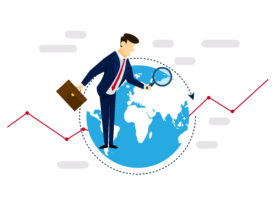Inflation has been on the rise for the past few months and it is a contentious issue for all central bankers around the world. Markets have reacted sharply to the US central bank’s plans to increase interest rate aggressively in the coming months to curb inflation.
Going forward, markets will continue to react as and when the central banks raise the benchmark interest rates and any commentary or hints around inflation and higher interest rates.
Central Banks use various direct and indirect instruments to implement their monetary policy.
In the Indian context, there are four policy rates – Repo rate, Reverse Repo rate, Marginal Standing Facility rate and Bank. Among these four, the most important is the repo rate which is keenly followed by economists, rating agencies, businesses, media tracking the markets and financial news, and other stakeholders.
Now let’s take a look at the connection between interest rate, inflation and a host of other asset classes.
Inflation and Interest Rates
When inflation increases, the central bank decides to increase the interest rate to curb inflation.
In the Indian context, the inflation target is set at 4% by the RBI. It has also set a buffer and the inflation range is anywhere between 2% and 6%.
If inflation slips below 2%, the RBI will decrease its key interest rate which is known as repo rate in India. This decrease in interest rate will allow banks to lend more at low interest rates spurring economic activity.
Interest Rate and US Dollar
The US economy is the biggest economy in the world and its currency – the US dollar – is the reserve currency of the world as more than 70% of the world trade happens in US dollar.
So, whenever the key interest rates in the US are increased, the dollar will strengthen, compared to other currencies in the world.
When the US dollar strengthens, other currencies weaken with respect to the US dollar.
US Dollar and Indian Rupee
When the US dollar strengthens, the Indian rupee will depreciate and decrease in value. This means, if $1 is equal to Rs 65, last month and if $1 is equal to Rs 70 next month, then the Indian rupee has weakened or depreciated and the US dollar has strengthened or appreciated.
Why so?
Earlier, with Rs 65, you can buy $1. But, after a month, you have to pay Rs 75 to buy $1. This means the value of the Indian rupee has depreciated.
Inflation and Gold
Among the different asset classes, gold is generally considered as a hedge against inflation. So, whenever inflation rises, the price of gold increases as investors and traders tend to park their money in safe haven assets like gold.
Interest Rate, Gold and Other Commodities
Interest rate and gold have an inverse relationship. When interest rates are increased to contain inflation, then gold price is most likely to fall. All commodities are priced in dollars. So when the dollar strengthens, gold prices decline. The same inverse relationship applies to other commodities such as oil, copper, platinum, wheat, etc.
Interest Rate and Stock Market
When interest rate is hiked, it has a negative effect on the overall stock market. This is because, investors and traders view holding shares amid an interest rate hike as risky. So, they move to less risky assets like treasury bills and corporate bonds.
Secondly, when interest rate is increased, the cost of borrowing for companies rises. This will affect their future free cash flow and affect their profit margins. The market participants will factor in the lower future cash flows and lower profit margins and slower growth of companies in terms of revenue as well.
If enough number of companies give a lower forecast, their stock prices will also tumble. As a result this will have a ripple effect on the entire market.
In the Indian context, most of the money comes from Foreign Institutional Investors. So, when interest rate is increased in the US, there is a liquidity crunch. The amount of dollars in the world monetary system declines. The Foreign Portfolio Investors or Foreign Institutional Investors will sell their holdings in the Indian market and take their dollars back to their home country.
This will lead to a fall in the share price of companies and the overall market will be affected in a negative way.
Interest Rate and Realty
The construction companies take huge loans to build townships and to meet their capital expenditure. When the central bank increases its key interest rates, the commercial banks also will increase their interest rates as the commercial bank’s cost of capital will increase. This will have a chain reaction and the builder/ construction companies will increase the price. So, whenever there is a rise in interest rates, property prices and rentals tend to rise.
Inflation and Cash
When inflation increases, the price of goods and services increases. This will erode the value of the cash. So, if you were able to buy tomatoes for Rs 50 per kilo, last month and the price of tomatoes rise to Rs 100 per kilo this month, then for a consumer the purchasing power diminishes. He/she will buy less tomatoes this month. This will have a cascading effect on the overall economy and the country’s economic growth will be slowed down.
Interest Rate and Bond Yield
When there is a buzz of increasing the key interest rate by the central bank, the bond yield increases and the bond prices decline. So if the US Fed increases key interest rate, the country’s treasury bond yields rise and bond prices fall. This is the case for any country’s bond yield when the corresponding country increases its key interest rate.





